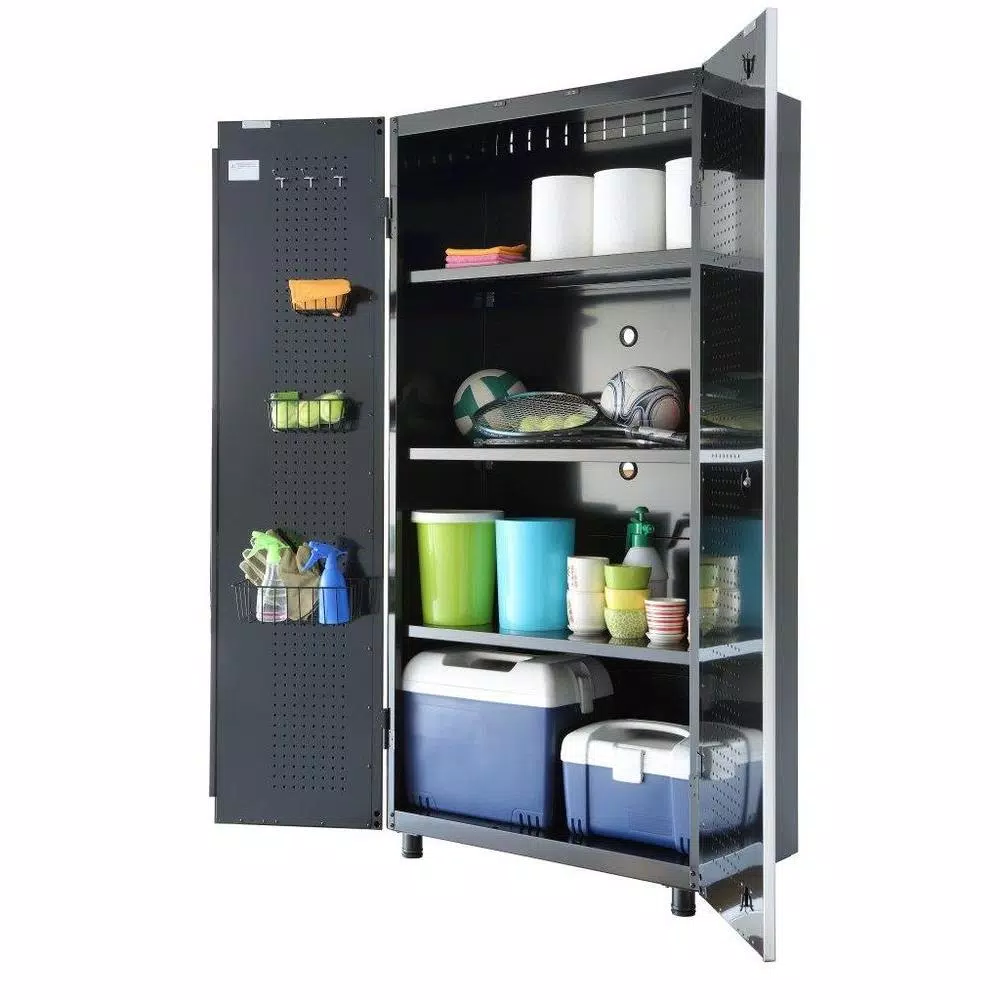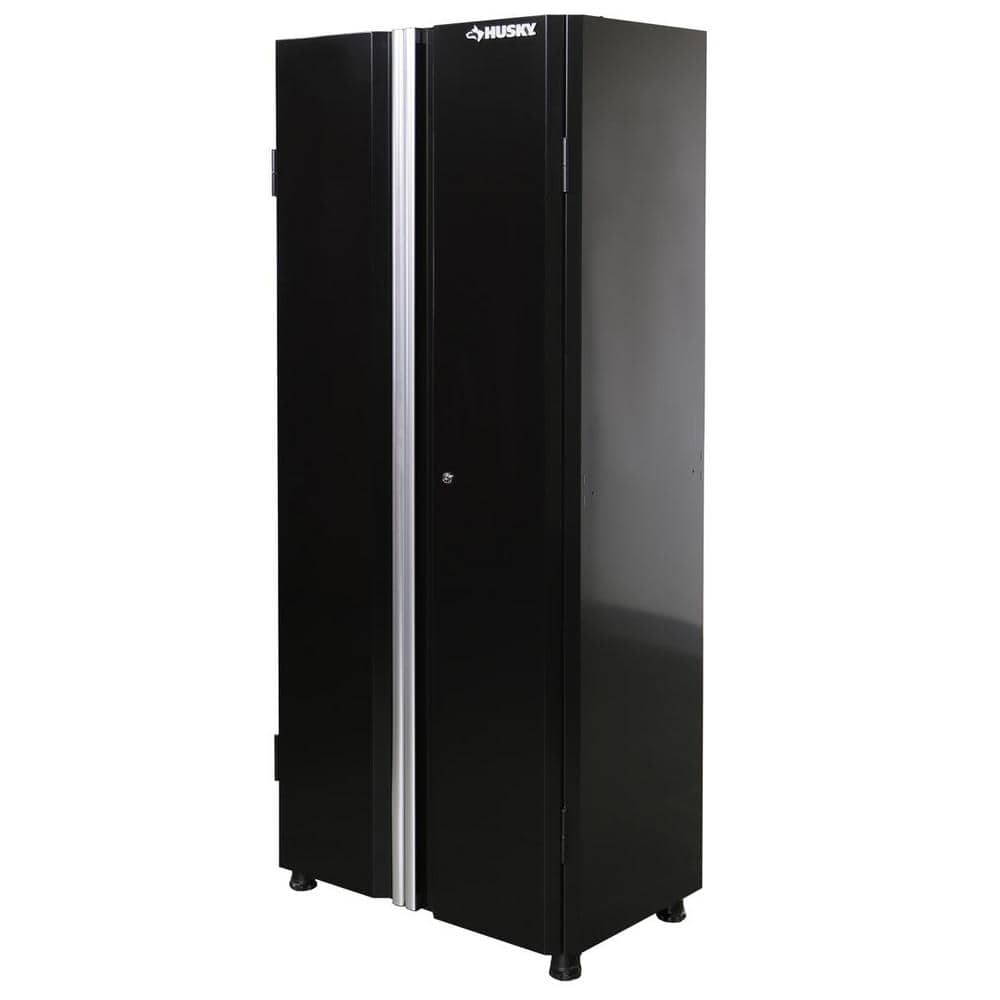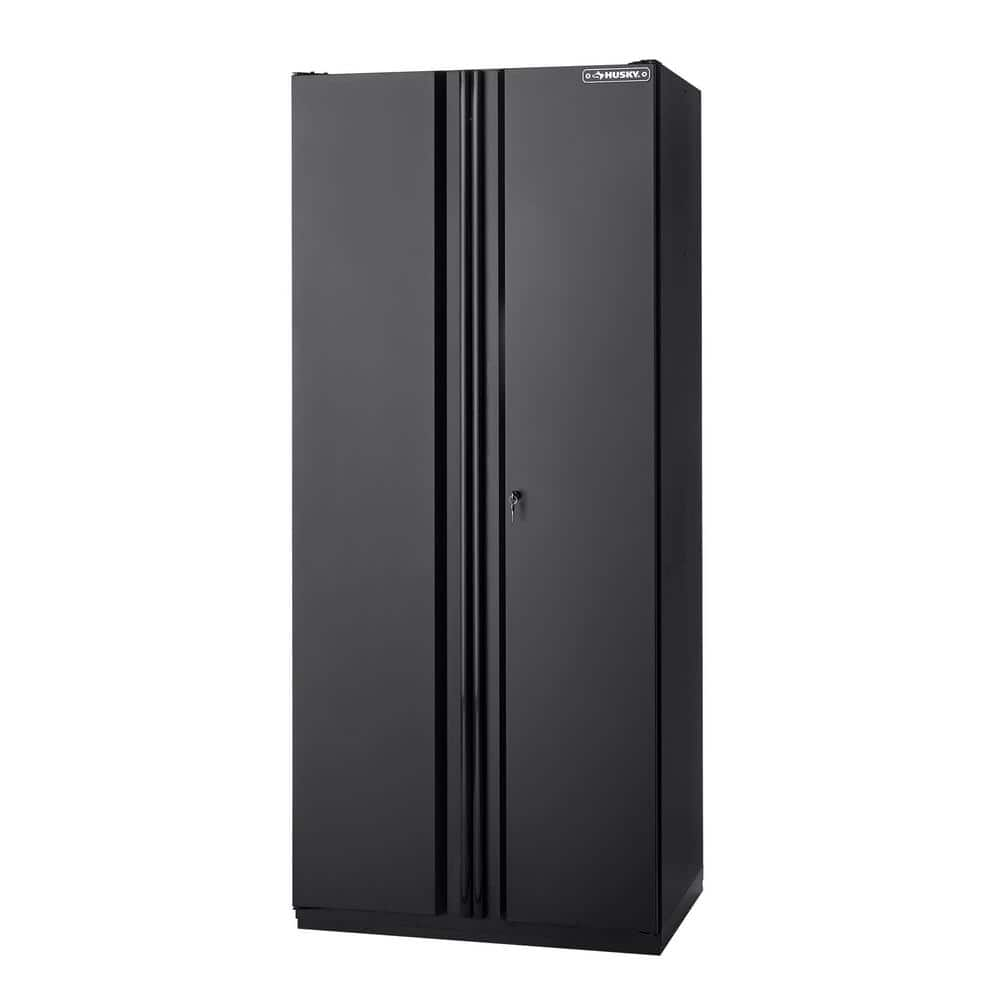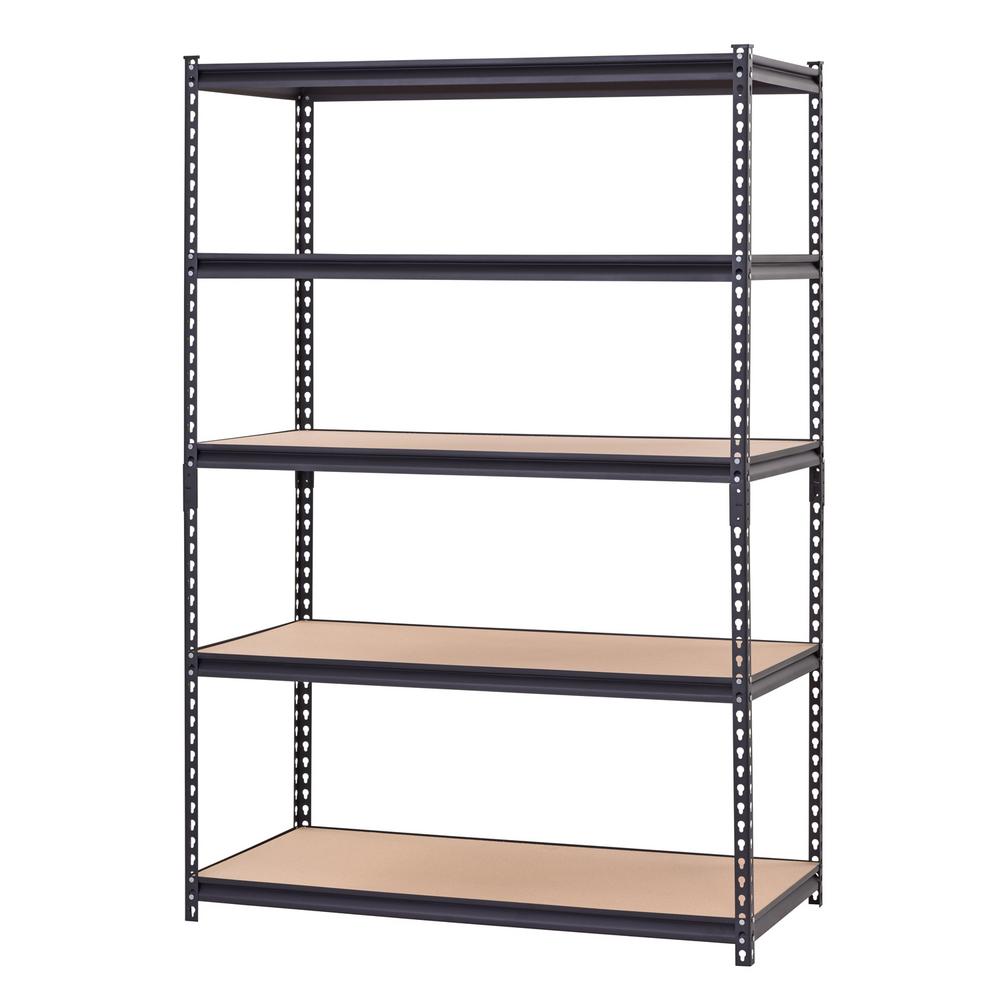Husky 48 in. W x 72 in. H x 18 in. D Steel Garage Floor Cabinet
Easy assembly with included hardware. Three adjustable-height shelves hold up to 150 lbs. each. Includes interior door panel pegboards for additional storage.
This 48 in. W x 72 in. H x 18 in. D Steel Garage Floor Cabinet is a perfect addition to your garage. Each cabinet features double-wall doors with pegboard panels for added storage. The three adjustable shelves can hold up to 150 lbs. each. Some easy assembly is required.
- Quick and easy assembly with tools included
- Total product weight: 143lbs
- Three adjustable shelves accommodate multiple storage needs
- Sturdy double-wall doors include pegboard door panels for additional storage
- Grommets on the back wall for cord access
- Adjustable feet compensate for uneven floors
- Withstands extreme temperatures, high humidity and everyday wear and tear
- Backed by a Lifetime Warranty. If your Husky product ever fails, bring it back and we will replace it for free.
Additional information
| Assembled Depth x Height x Width (in.) | 18 x 72 x 48 |
|---|---|
| Shelf Weight Capacity (lb) | 150 |
| Manufacturer Warranty | Lifetime warranty This warranty excludes incidental/inconsequential damages and failures due to misuse, abuse or normal wear and tear. This full warranty gives you specific rights and you may also have other rights, which vary state to state. |






by Amy
Perfect for my needs, lots of storage room and fits perfectly into my garage.
by Linda
Husband loves his new cabinets. We got three and he already wants another.
by Chris
Met our high expectations and was simple to assemble.